Earth as a building material is, simply, as old as the hills. As a small child I remember modelling a ‘Saxon’ village in clay, an exercise which might not have met modern curriculum standards but combined a light-touch history lesson with the satisfaction of kneading wet mud. Jean Dethier’s immense, collaborative and globally inclusive new book The Art of Earth Architecture: Past, Present, Future (Thames & Hudson) is, he admits, the fruit of a lifelong obsession. Running through the pages, their rich and many-authored text and a magnificent range of images, is an impassioned plea for a return to the widespread use of building with mud – so eminently sustainable, especially in the developing world. Dethier, formerly a curator at the Centre Pompidou, has pursued his goal with remarkable tenacity over the decades. He and his team, their objectives given institutional heft by the UNESCO chair (or programme) in Earthen Architecture, Building Cultures and Sustainable Development at the Grenoble School of Architecture, now have the satisfaction of seeing training, experience and information being shared globally.
Once again, it is time for a serious consideration of earth building – for this is a recurrent cycle. Hassan Fathy (1900–89), the great Egyptian architect, led a revival of mud building in his home country from the 1940s. He realised that it remained in use for peasant housing, which suggested that the skills of labourers who were still familiar with earth construction could be applied to buildings of greater ambition or, least, more sophistication. Essentially, mud brick exemplified a low-tech, low-energy approach, the material being sun-dried rather than expensively fired in kilns. Dethier points out that Fathy had in fact spent the 1930s working in reinforced concrete, following a Western and international modernist approach. Then, driven by political conviction, he chose to explore the vernacular and local roots of earth building, avoiding working with iron and cement. In the 1940s Fathy designed New Gourna, a village near Luxor rebuilt entirely in mud. Here he revived the ancient technique of the Nubian vault, a means of creating a roof by laying courses of bricks at an angle against a gable wall. This creates a self-supporting structure, invaluable on sites where timber for formwork is unavailable. Although Fathy’s second Egyptian village, New Baris in the Western Desert, was abandoned owing to the Six Day War, so influential was he in the revival of earth building aided by structural innovation that Indian architects turned to his example, for all the variety of earth structures across the subcontinent. Throughout the book are many references to the encouragement provided by the Aga Khan Award scheme throughout Africa and the Middle East. Fathy received the Chairman’s Award in 1980. By then his activity had extended into New Mexico, the heart of adobe building, culminating in an earth-brick mosque.
The book ends in Dandaji, a village in Niger, where the old mosque, an organic structure which could almost have been moulded by hand, is now a public library. Sitting alongside it is a very new mosque, in which earth brick and concrete ribs come together in common cause to support a soaring dome, a stunning building by the widely admired architects Mariam Kamara (from Niger) and Yasaman Esmaili (from Iran).
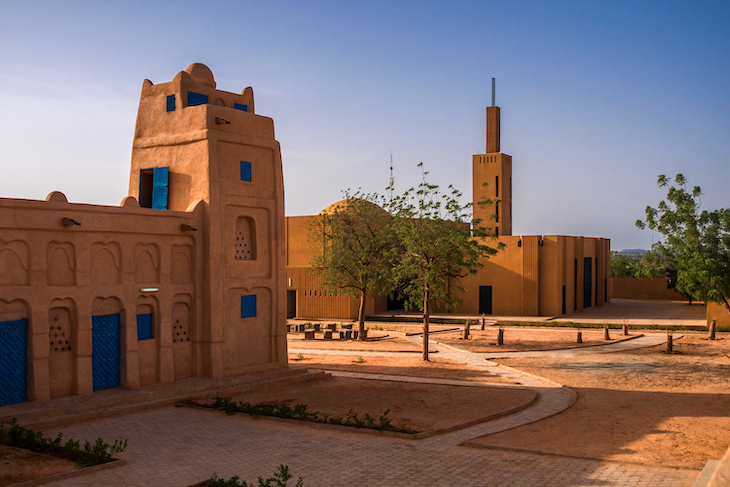
The Hikma mosque in Dandaji, Niger, designed by Yasaman Esmaili and Mariam Kamara and completed in May 2018. Photo: James Wang; courtesy Atelier Masōmī
Depending closely on geology and climate, approaches to earth building vary widely. In early 20th-century Britain there was a brief flirtation with different versions and techniques, each recalling local and highly regional practices. Experiments with earth and mud building seemed promising options in the face of a dire rural housing situation just after the First World War, the crisis exacerbated by a desperate shortage of building materials (especially brick). As Lawrence Weaver, civil servant and architectural historian, wrote, ‘materials always look well in the place where they are naturally found’. Energetically promoted by the young architect Clough Williams-Ellis (1883–1978), pisé (which could be either chalk or clay marl, used dry and then shuttered), cob and clay lump were all included in the Ministry of Agriculture’s trial project for economical cottages for smallholders. Thirty-two were built in various materials on a site at Amesbury in Wiltshire, which is actually chalk country. Afterwards Weaver reported that the Ministry had concluded brick was best, in part because earth building needed specific local skills, and deep eaves and a base of concrete or brick to offer protection from the elements above and from rodents below – a feature known as a ‘hat and a pair of shoes’. In Berkshire, where clay lump was often used for garden or farmyard walls, a pert thatched coping was employed.
Across the country, earth buildings turned to dust once the skills and knowledge to maintain them had vanished. But there are exceptions and in south Devon, around Crediton in particular, the countryside is the richer for its red, walled barns and comforting, cushion-shaped farmhouses, built from the very earth on which they stand.
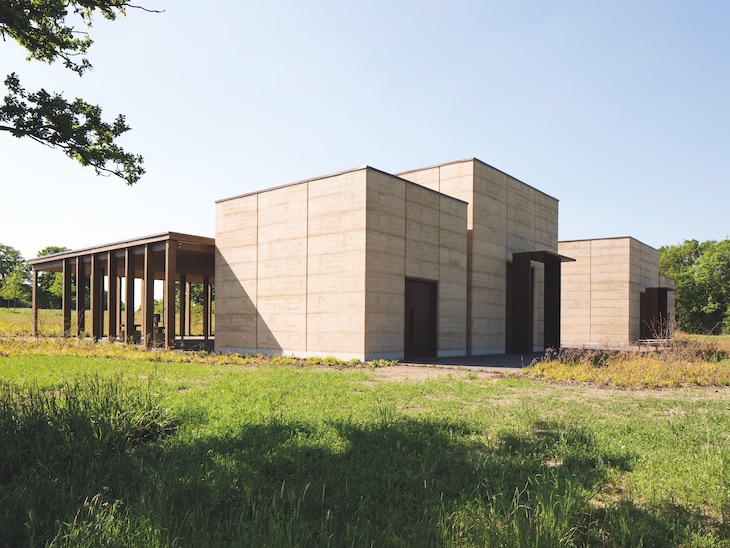
They prayer halls at Bushey New Cemetery, designed by Waugh Thistleton Architects and constructed in 2017. Photo: © Lewis Kahn; courtesy Waugh Thistleton Architects
There are some signs of a revival of earth construction in Britain. At the Eden Project in Cornwall, the original visitor centre (designed by Grimshaw and opened in 2000) demonstrates low-impact building methods. One example is a sweep of tall, red, rammed-earth walling, skimmed with clay plaster, on the route taking the public in and out of the ticketing and information area. Given that the material had not been used in Britain for some 80 years there were hitches to building the great battered walls within the disused chalk-pit site, but everything was a learning process, including the construction which had been envisaged as a training programme. In 2017, a group of simple but ritually important pavilions were designed by Waugh Thistleton for the grounds of Bushey New Cemetery. Built almost entirely of rammed earth, their strong symbolism is one that all major religions share and provides that most resonant phrase within Judaeo-Christian burial liturgy: ‘earth to earth’.
From the June 2020 issue of Apollo. Preview and subscribe here.
Unlimited access from just $16 every 3 months
Subscribe to get unlimited and exclusive access to the top art stories, interviews and exhibition reviews.

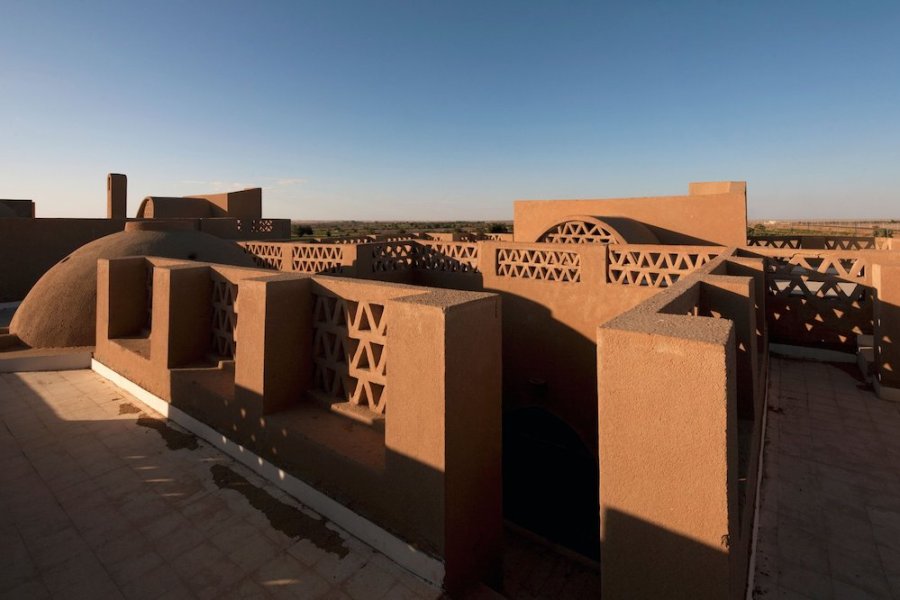
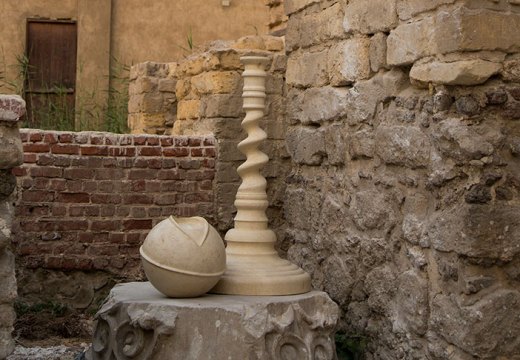
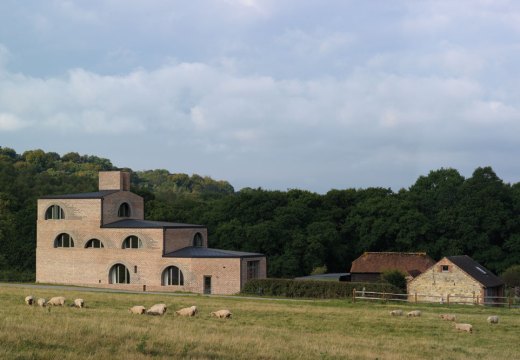
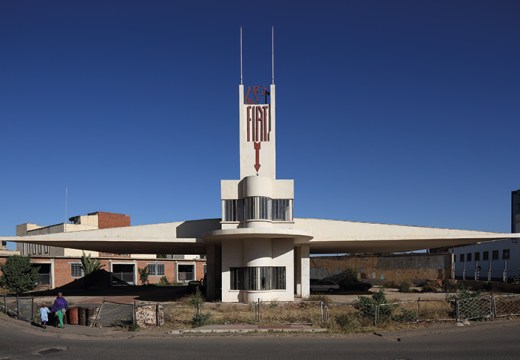









![Masterpiece [Re]discovery 2022. Photo: Ben Fisher Photography, courtesy of Masterpiece London](http://www.apollo-magazine.com/wp-content/uploads/2022/07/MPL2022_4263.jpg)
Why are fathers so absent from art history?